Staff
Frank Rosenblum - Professional Associate
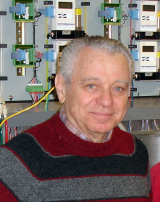 |
Research Topic: Conducting research on the Self-Heating of Sulphides In the Mining Industry, the self-heating of sulphides can cause major disruptions, hazardous environments and in some extreme cases, the loss of life. The research being conducted at McGill is to identify the fundamentals that cause a seemingly inactive sulphide to heat up without being exposed to an external heat source (self-heat). This research has shown that only some sulphides or a combination of sulphides when exposed to a “favorable environment” will self-heat. It has also been shown that self-heating proceeds in 3 distinct stages (A B and C). Past and currant test work has also been conducted in the attempt to mitigate the adverse effects of self-heating by the using chemical reagents. Recent ContributionsKim, H., Kökkılıç, O., Rosenblum, F., Waters, K.E., Exploring the connection between elemental sulphur and sulphide minerals during Stage A conditions – A Design of Experiments Investigation. Minerals Engineering, 2024, 206, 108533. https://doi.org/10.1016/j.mineng.2023.108533 Kim, H., Rosenblum, F., Kökkılıç, O., & Waters, K., 2023. Role of Elemental Sulphur in Stage B Self-Heating of Sulphide Minerals, and the Potential Role of Polysulphides. Minerals, 13(7), 923. https://doi.org/10.3390/min13070923 |
Ozan Kokkilic, Ph.D. - Research Associate
 |
Research Interests: Physical Separation, Design of Experiment, Optimization Mineral processer with 16 years’ experience in applied academic research, Ozan Kökkılıç has a Ph.D. and solid knowledge and experience on mineral processing. Over the years, he gained significant experience particularly on the physical separation (comminution, size, gravity and magnetic separation) and flotation through the industrial research projects he participated at Istanbul Technical University, in Turkey. During his postdoctoral research at McGill University he worked in Prof. Jim Finch & Prof. Kristian Waters’s Mineral Processing Group and specialised on the dry gravity separation and centrifugal dense medium separation on gold, iron ore and rear earth minerals. During his Ph.D. thesis he also gained significant experience on design of experiment methods and he enhanced this knowledge as a member of McGill University, Mineral Processing Group. In addition to his research topics, he also assisted the Ph.D. candidates in the same area of expertise. Since 2017, he is continuing working at McGill University in Prof. Kristian Waters’s Mineral Processing Group as Research Associate. Google Scholar |
Yue Hua Tan, Ph.D. - Research Associate
 |
Research Interests: Froth Flotation, Frother Chemistry, SEM Image Analysis With over 20 years’ teaching experience in both Canada and China, Yuehua Tan is very highly experienced in organizing presentation materials and making oral presentations. As fabrication nanostructured Pd membranes was part of her Masters’ study, access to the SEM and other facilities allowed her to develop analytical skills for material characterization. Recent research experience has involved not only frother/collector chemistry, but also self-heating, solvent extraction and Jameson Cells. Recent ContributionsSarah Jung, Yue Hua Tan, Frank Rosenblum, James A. Finch. 2020. Mitigating sulphide self-heating using hygroscopic agents: Case study with pyrrhotite, Minerals Engineering, 148, 106-184. Sungjae Moon, Frank Rosenblum, Yue Hua Tan, Jan E. Nesset, Kristian E. Waters, James A. Finch. 2019. Examination of the United Nations self-heating test for sulphides, Canadian Metallurgical Quarterly, 58(4), 438-444. Xiang Zhou, Yue Hua Tan, James A. Finch. 2019. Frothing Properties of Amine/Frother Combinations, Mining, Metallurgy and Exploration, 36, 81–88. Seng How Kuan, Yue Hua Tan, James A. Finch. 2018. Experience coating bubbles with solvent in a downcomer, Minerals Engineering, 123, 160-166. Yue Hua Tan, James A. Finch. 2018. Frothers and gas dispersion: A review of the structure-property-function relationship. Physicochemical Problems of Mineral Processing, 54(1), 40-53 |
Shiva Mohammadi-Jam, Ph.D., M.Sc. - Research Associate
 |
Research Topic: Flotation process and surface chemistry of minerals Shiva joined the McGill Mineral Processing Research Group as a PhD student and investigated the applicability of inverse gas chromatography (IGC) to mineral flotation under supervision of Professor Waters. Later, during her postdoctoral fellowship, she evaluated the application of benzohydroxamic acid (BHA) to the flotation of sulfide minerals. Now, as a Research Associate, she collaborates in various research projects and co-supervises Co-Op students. Her specific research interests include:
Recent ContributionsJustin Paris, Shiva Mohammadi-Jam, Ronghao Li, Jingyi Liang, Hak Jun Oh, Ozan Kokkilic, Sidney Omelon, Kristian E. Waters, Preliminary investigation into lithium extraction by phosphoric acid leaching of spodumene, Minerals Engineering, 209 (2024) 108613. https://doi.org/10.1016/j.mineng.2024.108613 Shiva Mohammadi-Jam, Ziyi Li, Neil Rose, Kristian E. Waters, An investigation into using benzohydroxamic acid as a collector for sulfide minerals, Physicochemical Problems of Mineral Processing 59(5) (2023) 175662. https://doi.org/10.37190/ppmp/175662 Shiva Mohammadi-Jam, Gilberto Rodrigues da Silva, Kristian E. Waters, Application of inverse gas chromatography to bench scale flotation of sulphide ore, Canadian Metallurgical Quarterly 63(2) (2023) 498-507. https://doi.org/10.1080/00084433.2023.2213928 |
Mark Lepage, Ph.D. - Postdoctoral Researcher
 |
Research Topic: The application of gas dispersion optimization to industrial flotation processes. Mark’s research interests are in applying gas dispersion optimization to industrial flotation operations, with a focus on the measurement of gas dispersion and hydrodynamic indicators. Mark is interested in developing novel sensors and measurement techniques to achieve a better understanding of mineral processing. |
Graduate Students
Sofi Buzukashvili - Ph.D. Candidate
 |
Research Topic: Zeolite synthesis from coal fly ash and its application to heavy metals remediation from wastewater Sofi's PhD research focuses on synthesizing zeolites from coal fly ash (CFA) to remove heavy metals (Cu²⁺, Zn²⁺, Ni²⁺, Pb²⁺) from wastewater. By binding magnetite nanoparticles to the zeolite using colloidal PVA solution, Sofi created magnetic zeolites that can be recovered from water using a Wet High-Intensity Magnetic Separator (WHIMS). Her work demonstrated the efficient removal and recovery of metal-laden zeolites from treated solutions, promoting a sustainable water treatment process. Google Scholar |
Arian Norouzi - Ph.D. Candidate
 |
Research Topic: Low temperature electrolysis of iron ores Arian's research interests encompass hydrometallurgy, electrochemistry, material synthesis and recovery, nanomaterials, and coatings. Throughout recent years, his studies have been focused on various methods to mitigate the negative impacts of metallurgical processes on the environment. This includes developing novel methods of silver recovery from used button cells as silver nanoparticles and an electrophoretic Cu-Mn spinel coating for application in the solid oxide fuel cell's interconnects. Moreover, the goal of his Ph.D. project is contributing to the development of a CO2-free electrolysis method for iron production to reduce the vast amount of CO2 gas that is currently being released to the atmosphere. Recent ContributionsA. Norouzi, M. Soltanieh, and S. Rastegari, "An electrophoretic co-deposition of metal oxides followed by in-situ copper manganese spinel synthesis on AISI-430 for application in SOFC interconnects," International Journal of Hydrogen Energy, vol. 47, no. 31, pp. 14346-14360, 2022, doi: https://doi.org/10.1016/j.ijhydene.2022.02.182. A. Norouzi, M. Adeli, and A. Zakeri, "An innovative hydrometallurgical process for the production of silver nanoparticles from spent silver oxide button cells," Separation and Purification Technology, vol. 248, p. 117015, 2020, doi: https://doi.org/10.1016/j.seppur.2020.117015. A. Norouzi, M. Soltaineh, and S. Rastegari, “Copper Manganese Spinel Coating on a Ferritic Stainless Steel for SOFC Application,” Iranian Journal of Ceramic Science & Engineering, vol. 9, no. 1, p. 57-69, 2020. [Online]. Available: http://ijcse.ir/article-1-764-en.html. |
Chukwuma O. Collins - Ph.D. Candidate
 |
Research Topic: Investigation into the surface chemistry aspects and beneficiation of graphite Collin’s research is focused on the investigation into the surface properties and beneficiation of graphite. Graphite is one of the most versatile minerals used on an industrial scale. It is a key component of lithium ion batteries in addition to a variety of other uses. While flotation has been a commonly used technique for the beneficiation of flake graphite, it is difficult to achieve high concentrate grades due to cross pollution effects between the graphite surface and gangue impurities. In this research, the surface properties of graphite would be investigated using zeta potential, inverse gas chromatography (IGC) and reagent adsorption isotherms to better understand the interaction between graphite and flotation reagents. Beneficiation studies would be carried out using mechanical and pneumatic flotation cells while the possibility of pre-concentration would also be explored using magnetic and micro multi-gravity separators. The tests will provide new insights into the surface properties of graphite, improve graphitic grade and preserve flake size. |
Ahmed Ali - Ph.D. Candidate
 |
Research Topic: Modelling Flotation: Incorporating Process Mineralogy This project will incorporate mineralogical analyses and flotation response into a more in-depth understanding of the factors involved in flotation. Therefore, different models will be applied to predict concentrate recovery and grade such as single rate constant and distributed rate constants (i.e., rectangular and gamma distributions). In addition, the goodness-of-fit of these models and the confidence interval of the parameters will be determined using regression analysis. Inductively coupled plasma optical emission spectroscopy (ICP-OES) could be applied for sample characterization. Quantitative Evaluation of Minerals by Scanning Electron Microscopy (QEMSCAN) will be used for mineral evaluation, liberation, and association. |
Ronghao Li - Ph.D. Candidate
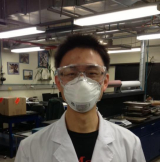 |
Research topic: Recovery of Nb-bearing minerals from Niobec ultra-fines Ronghao's research in focusing on recovering fine (below 10 micrometers) niobium (Nb)-bearing minerals from Niobec slimes. Nb is a transition element that has been applied mainly in the steel making industry, among other cutting-edge applications such as superconductors and optics. The Niobec deposit, located in Quebec, Canada, is one of the few active mines producing Nb in the world, and is the only one located in North America. The current operation at Niobec produces fine particles during the grinding stage. As they are detrimental to the downstream flotation process, these fines are being discarded which results in significant losses of Nb. Therefore, the initiative of my project is to recover Nb-bearing minerals from these fines using various mineral processing techniques including enhanced gravity separation, magnetic separator, and flotation. It is expected that the knowledge gained through this project will be helpful for the current production at Niobec deposit, other Nb deposits, as well as industries dealing with fine particles in a similar size range. Google Scholar |
Elmira Ravanasa - Ph.D. Candidate
 |
Research Topic: Investigation into relative froth height on flotation performance Elmira’s research is focusing on measuring the effect of different relative froth heights on flotation performance. Understanding how froth height can affect the water content according to the desired flotation performance is critical. Also, she uses conductivity measurement in froth zone to quantitatively monitor and control the water content and froth behavior. The results can be applied in industrial flotation operations to satisfy the flotation responses |
Jeff Opoku - Ph.D. Candidate
 |
Research Topic: Investigation of Gas Dispersion properties in frother and collector blends. Jeff’s research focuses on the investigation of gas dispersion properties in frother and collector blends. This investigation is centered around the hydrodynamic properties of collectors and collector-frother blends. Specifically in a two-phase system through the utilization of several techniques developed at McGill. In addition to that, Jeff will be working on the development of a portable device and technique in accessing plant process water to help characterize the properties of the natural surfactants in the water as well provide information pertaining to froth stability. |
Mandy Lokko - Ph.D. Candidate
 |
Research Topic: Heat treatment of minerals and its impact on separations Mandy's research during her master's centered on investigating the effect of temperature on bubble size in flotation on a lab scale; where a detailed methodology was developed to measure and determine the effect of temperature on bubble size (D32) using the two main frother types in industry. After successful completion of her master's degree, her quest to continue her education has expanded her horizon into researching on the conventional, microwave and plasma heat treatment of sulfide minerals to result in thermal fracturing and their impact in various separation processes, specifically flotation and magnetic separation (WHIMS), for her PhD project. |
Leader Floride Uwayezu - Ph.D. Candidate
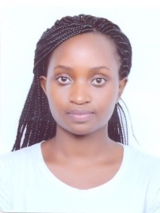 |
Research Topic: Investigation into physical separation of Wollastonite and Sulphide ores through applied process mineralogy Leader's research revolves around the physical separation (gravity and magnetic) of different minerals using applied process mineralogy. Recently, the focus of her work has been on stretching the use of physical separation methods (shaking table and Wet High-Intensity Magnetic Separators) to keep reagents out of the mineral processing systems, especially when processing industrial minerals such as Wollastonite and Diopside and eradicating unnecessary harmful chemical reagents' unfavourable impacts on the environment. |
Yvan Teddy Chegang Kwebou - Ph.D. Candidate
 |
Research Topic: Sustainable energy transition. Under the supervision of Prof. Kristian Waters, Teddy's Ph.D. research focuses on two key areas that contribute to the sustainable energy transition. The first area involves conducting a Life Cycle Assessment (LCA) of lithium-ion batteries (LIBs) used in electric vehicles, in collaboration with Prof. Alessandro Navarra. This research complies with ISO 14040 and ISO 14044 standards and includes a systematic review of current LCA studies on LIBs to identify gaps in the literature. Teddy’s work specifically focuses on the environmental impacts associated with the extraction and processing of lithium chemicals such as lithium carbonate (Li₂CO₃) and lithium hydroxide (LiOH), assessing energy consumption, pollution from chemicals used, and greenhouse gas emissions across the value chain. This comprehensive analysis aims to pinpoint the most impactful stages in the lithium production process and propose optimizations to reduce the overall carbon footprint of battery manufacturing. The second area of Teddy's research, conducted in collaboration with Dr. Shiva Mohammadi-Jam, focuses on the recycling of graphite anodes from spent LIBs. They are developing a three-step process that adheres to graphite purity standards such as ISO 14697 and ISO 3262 for regenerated materials. The process begins with physical separation, using a shaking table to isolate graphite from other impurities, which increases the graphite’s carbon content from 95% to almost 99%. The second step involves acid leaching with phosphoric acid (H₃PO₄) to purify the graphite further, raising its purity to 99.5%-99.7%. Finally, the graphite undergoes graphitization to restore its crystalline structure, making it suitable for reuse in LIB anodes. By following these standards and processes, the project aims to create a sustainable, cost-effective solution for graphite recovery, contributing to a circular economy and reducing the environmental impact of battery disposal. |
Ahila P - Ph.D. Candidate
 |
Research Topic: Beneficiation of Canadian Lithium ore. Ahila’s research interest is beneficiation of Canadian Lithium ore. So far spodumene is considered as main source of lithium carbonate. The demand of lithium has been increased from past few years where it is mainly used for electronic applications and lithium carbonate in glass industry. Among the major resource of lithium ore such as spodumene, lepidolite and petalite. Petalite is also the one of the major resources for lithium ore contains % LiO2. It has the SG of 2.39 to 2.49 lower than the spodumene. I would like to work on the petalite ore as it has reasonable content of Li, and it will give insight about the beneficiation behaviour that mainly helps to achieve the demand of lithium requirement by 2030. The list of objectives can be identified from the petalite ore beneficiation. Beneficiation of Canadian petalite ore
Recent ContributionsAhila P, S.Bhattacharya, (2018) Effect of crusher type and crusher discharge setting on washability characteristics of coal, Materials Science and Engineering, IOP Conference series, 314, International Conference on Advances in Metallurgy, Materials and Manufacturing 6–8 March 2017, Salem, Tamilnadu, India, doi:10.1088/1757-899X/314/1/012005. |
Justin Paris - Ph.D. Candidate
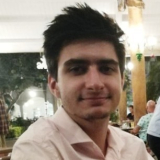 |
Research Topic: Extractive metallurgy of lithium from spodumene ores Justin’s research aims to increase the availability of lithium resources by developing new mineral processing and hydrometallurgical methods for the beneficiation and extraction of lithium from spodumene ores. His current work is focused on the investigation of phosphoric acid as a potential lixiviant for spodumene leaching. |
Islom Murodov - Ph.D. Candidate
 |
Research Topic: Recovery of rare earth elements from sedimentary phosphate ore in Central Kyzlkum Islom’s project aims to recover rare earth elements (REEs) from sedimentary phosphate ore in Central Kyzlkum, Uzbekistan, through a combination of mineral processing and hydrometallurgical techniques. While research on processing liberated REEs minerals exist, limited studies have been conducted on processing REEs in phosphate ore. The Kyzylkum deposit, in particular, has yet to be studied in terms of its complex rare earth element-bearing minerals. Moreover, processing slime (which accounts for nearly half of Kyzylkum’s phosphate ore) and the isomorphous substitution form of REE in phosphate ore pose a challenge for many mineral processing operations. As a result, the REEs in these products often end up in waste. By pioneering the recovery of REEs minerals from Kyzylkum phosphate ore, this project is set to gain valuable knowledge and insights into new methods and production lines specific to Kyzylkum’s phosphate production. It will also expand our understanding of the processing of REE-bearing phosphate ores, fine fractions, particularly REEs-bearing slimes, and contribute to the wider body of knowledge on REEs in other types of ore. |
Helmi Kalahari - Masters Candidate
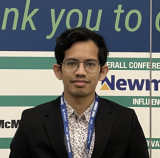 |
Research Topic: Microflotation of copper-molybdenum ores using novel reagent Helmi is a master's student at McGill University under the supervision of Professor Kristian Waters. His research interests lie in microflotation and surface chemistry, focusing on the flotation of chalcopyrite and molybdenite using novel reagents. With a commitment to advancing the field of mineral processing, Helmi aims to explore innovative approaches that enhance efficiency and selectivity in flotation processes. |
Young Bin Moon - Masters Candidate
 |
Research Topic: Improvement and Optimization of coarse hematite flotation This research focuses on the improvement of coarse particle flotation, which has been a long-standing challenge in the mineral processing industry, using an aerated fluidized bed technology. Through this research, we look forward to potentially decrease energy consumption related to comminution processes and recover any coarse particles lost in tailings. Youngbin look to investigate the effects of slurry rate, air rate and bed height (level) on the Eriez HydroFloat cell for iron oxides, namely coarse hematite particles. In addition to this, the effect of frother concentration on the bubble sizes (CCC) with the HydroFloat cell will be studied to be compared with data on a mechanical Denver cell. |
Zolboobayar Ulziisaikhan - Masters Candidate
 |
Research Topic: Improvement and Optimization of coarse hematite flotation Zolboo is a new Master student joining McGill in September 2022. His master research will be focus on Iron ore Concentrate samples upgrade for electrolysis. Before he joined this Minerals processing group, Zolboo used to work as an Underground hard rock Mining Engineer over 12 years. |
Retired
Ray Langlois - Mineral Processing Shop Coordinator
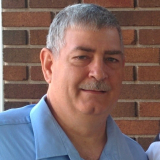 |
Ray supports the large group of researchers in the field of mineral processing. The research targets all aspects of mineral processing. Crushing, grinding, gravity separation, magnetic separation as well as flotation. Shop Coordinator Since 1993 (over 25 years). Organize and teach undergraduate laboratories. Maintain lab equipment and fabricate custom research set-ups. Control finances for budget and purchasing of lab equipment and supplies. |